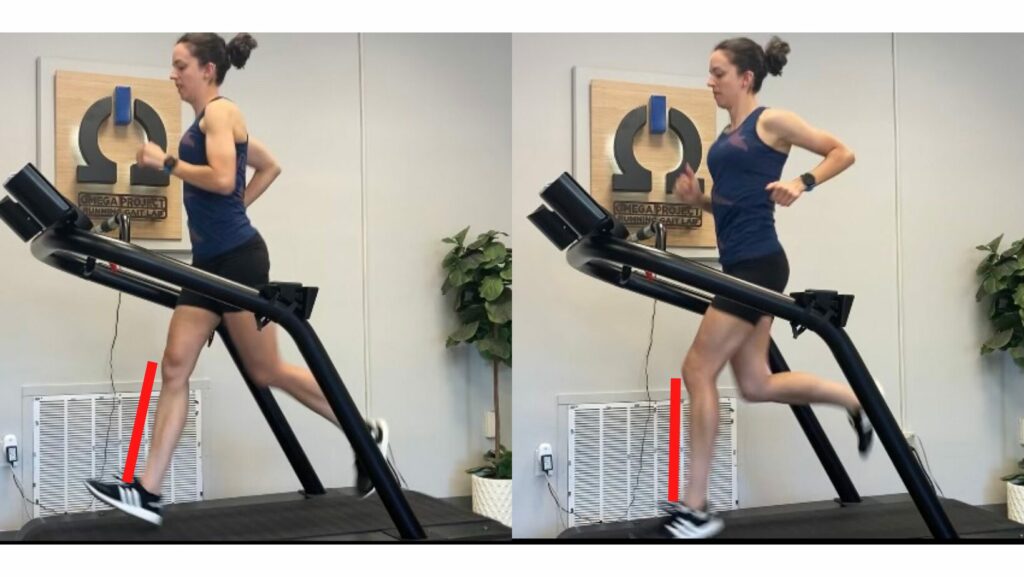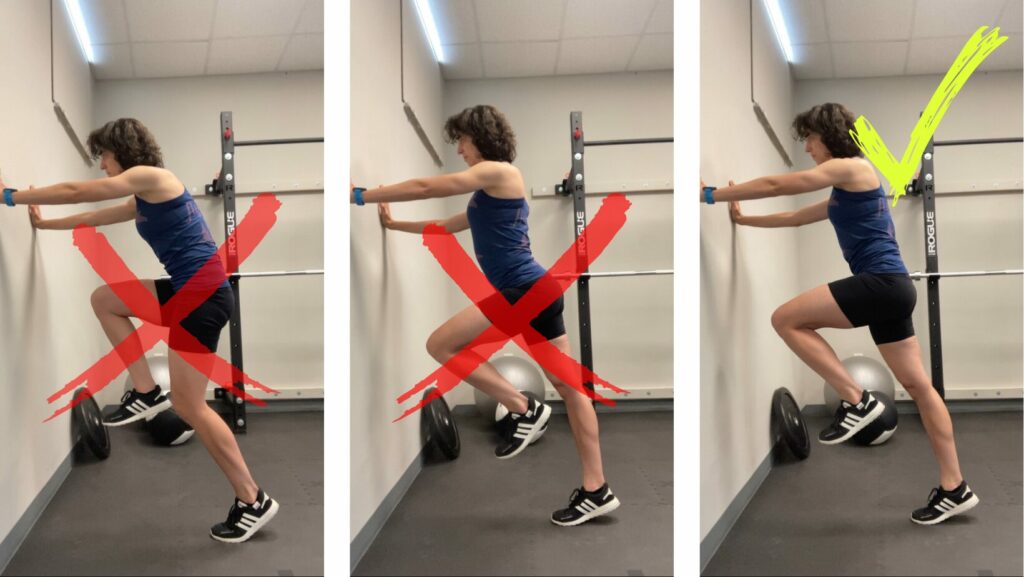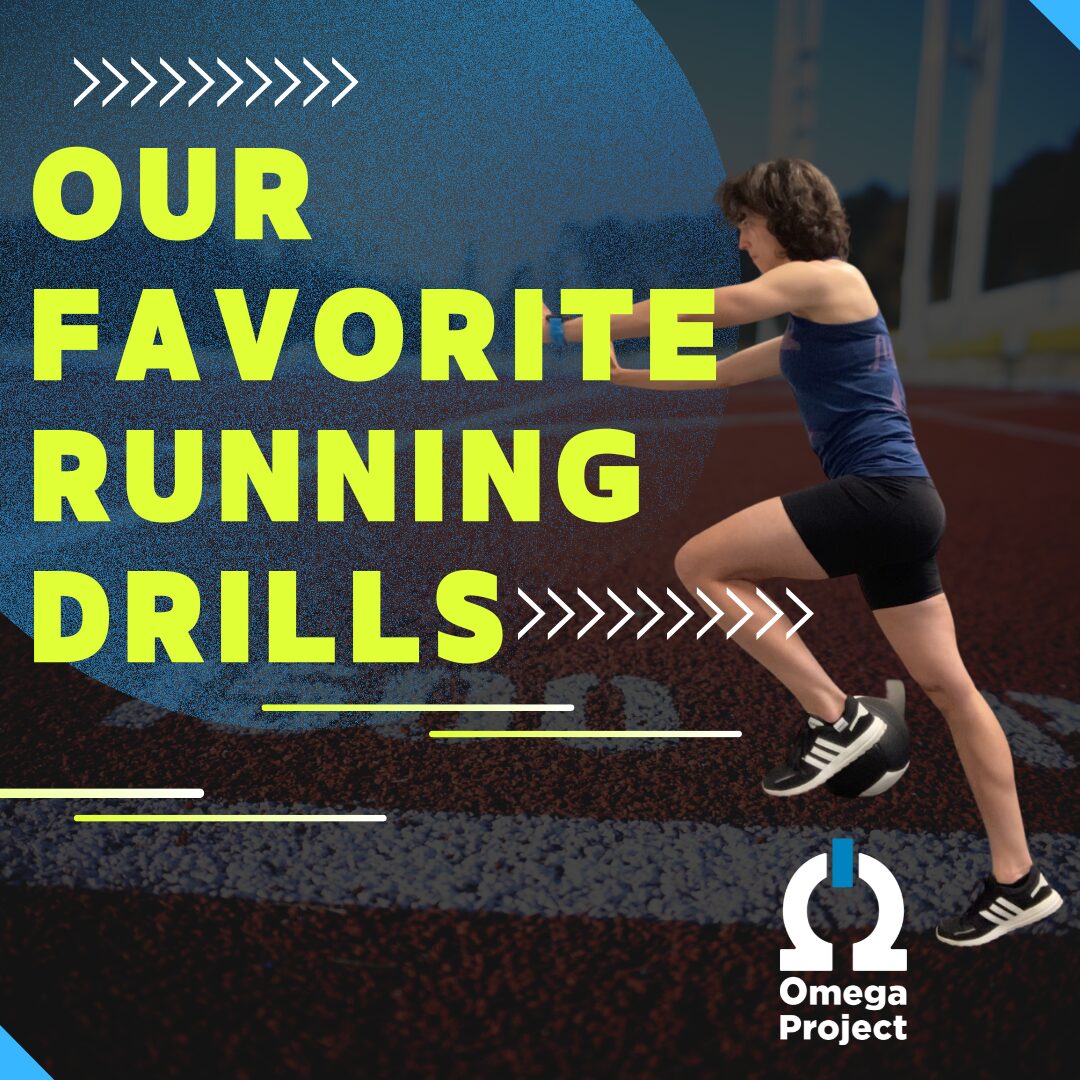While there is a huge benefit to getting an individualized program to improve your running form, not everyone has access to 3D Gait Analysis and providers/coaches that specialize in running gait analysis.
So, what are some things you can do to improve your form? We don’t recommend a cookie-cutter approach, such as a program or method that encourages one style of running. However, it’s typically a safe bet to work on improving your cadence and/or knee drive.
Research shows that increasing your cadence by about 5-7% can decrease your risk of injury. We talk more about cadence here. In summary, there is no magic number. The goal is not to shoot for 180, but rather a 5-7% increase from your current cadence. If your cadence is already above 170, this may not be a beneficial cue for you.
Knee drive is something a lot of athletes we assess are missing in their running form. It can result in overstriding, poor absorption of forces upon initial contact, and negative changes in alignment throughout midstance, our shock absorption phase of gait. You’ll see in the video below how limited knee drive (or hip flexion) causes the lower half of my leg to swing forward in a pendular pattern, resulting in the foot landing out in front of me. In other words, if I don’t swing my upper leg far enough forward, the lower leg will swing further forward to compensate.
The difference that makes in running form can be seen in the video below. I switch from running with minimal knee drive to running with increased knee drive. Watch it at regular speed and then continue the video to when I slow it down. See if you can spot the changes and then look at the difference in my initial contact position in the pictures posted below the video. This can be the difference between putting the brakes on while running and keeping forward momentum.
Both of the pictures below are taken at initial contact. The red line indicates something we call “tibial inclination” or the angle of the tibia (the lower leg) at initial contact. We want that to be below your knee, rather than out in front. This means your foot is landing underneath you when you strike the ground.

While improving your knee drive and getting the foot underneath you may result in more of a midfoot strike, we don’t recommend thinking about where your foot hits the ground. It is better to let your hips and knees lead you to the correct form. The cue we often give to accomplish this is to drive the knees forward as if you were kneeing a soccer ball out in front of you (not juggling a soccer ball upwards). We use many other cues to help runners make this change, as well.
Because so many of the gait patterns we see (not all!) improve with increasing knee drive, we find ourselves prescribing two drills over and over again. Drills help reinforce the movement pattern we are trying to change while you run.
Marching
In the video below, I demonstrate marching. I typically cue people to bring the heel up along the line of the opposite shin to the knee. As you step down, you want to have the landing foot overlap the opposite foot. You are not driving the knee up and you are not taking big steps. You are driving the knee forward and landing with the foot underneath you. Stay nice and tall and remember that slower is better.
When you’ve mastered the form for the marching drill, you can begin to speed it up or progress to the single-leg version below. Notice how my foot almost lands behind the opposite foot. This can seem counterproductive to moving forward but it works! Pay attention to how the glutes are driving your forward momentum when you perform this drill.
Wall Drill
The wall drill is another favorite that incorporates knee drive, alignment, glute and core engagement, and more. The pictures below show poor form and you’ll see me go into those poor postures during the video. For the wall drill, you want to drive the knee straight forward (not across your body), keep the foot and knee in line, keep the stance leg straight and engaged on your toes, and maintain a level pelvis and neutral spine (tight core).

In the video, you’ll also see the progression to “quick switches.” You do not want to progress to this until you have proper form and can reproduce that form consistently. Take note of how I am simply replacing my leg on the ground. You do not want to be bouncing up and down as demonstrated in the video. This adds extra strain and wasted energy while running.
Ultimately, the best way to improve your running form is to get assessed by a professional who specializes in running gait analysis. This will help you learn your movement limitations and specific running form needs to allow for the highest chance of success in reducing injury risk and improving performance.
At Omega Project, we offer 3D Gait Screens as a quick assessment option and full 3D Gait Analysis appointments for the most comprehensive look at your movement and running form. Sign up today!

